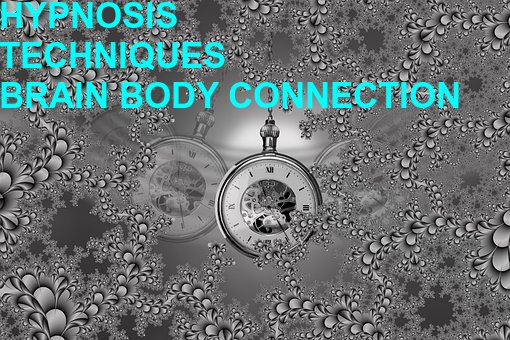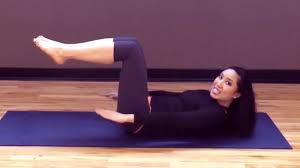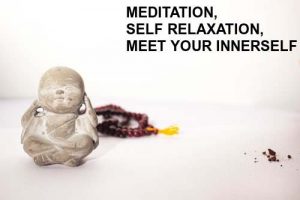Hypnosis has become an umbrella tern to cover a host of mental phenomena. It is not sleep; nor is it being awake; neither is it a coma, or supernatural. On the contrary, it is as natural as being asleep or being awake. Actually, it is a combination of the best of both. While the body seems to be at rest, the mind is keenly aware in the most intelligent way, and can direct messages to the body mechanisms.
Without self-determination and inner control, our minds remain malleable to outside manipulation. On the other hand, it can ordinary people accomplish extraordinary things; it can enable the disabled, uncover everyone’s abilities and discover their hidden strength.
THE FOUR LEVEL OF HYPNOSIS
One Hypnoidal (Alpha) – This is a light level, easily attained by most people who have used meditation and guided imagery. It begins with muscle relaxation and brings with it a sense of contentment, as the heart rate slows down and harmonizes with the rhythm of deeper breathing. Concentration is enhanced, as well as memory recall.
Two Stress Reduction (Deep Alpha) – There may be spontaneous eye closure, with inability to open eyes at command. There is decreased motor activity of the limbs. There is drowsiness and lassitude; the operator lifts the subject’s arm, which falls limply without resistance.
Three Mental/Emotional (Light Theta) – As the trance deepens, the raised arm responds to suggestions of rigid catalepsy, and can remain in an upright position for a protracted length of time. Post hypnotic suggestion is accepted.
Four Core (Deep Theta) – This is the Center of Radiant Energy, an ultra-depth trance where our spirit manifests itself. Here, our minds reveal what our heart may conceal. We awaken to the beauty of life and thrill to spiritual love.
Not everyone goes deeper than the Alpha level, especially the first time. This doesn’t mean they can’t be helped. Some people start off at a very light trance level and subsequently go a little deeper each time they practice.
IMPORTANCE OF HYPNOSIS
Hypnosis takes you on a fascinating trip into your mind and feelings, to discover how forces from the outside have programmed you. This is the space of reflection, as well as correction. Here you can de-condition and re-condition your reflexes. Decondition means you cleanse your mind of negative reflexes so that new positive conditioning can be instilled.
Hypnosis is effective because it works with the natural function of the brain, spurred by the imagination. It takes us into a great warehouse of past-accumulated information. Hypnotic introspection gives us control over our minds and the ability to acceptor reject surrounding conditions. It brings insight to past experiences, present situations and future direction.
THE BRAIN TO BODY CONNECTION
A large percentage of ailments have their origin in accumulated mental and physical tension. It is common knowledge that such illnesses as ulcers, headaches, and a host of other maladies are directly affected by stress. These are referred to as “psychosomatic illnesses,” and according to researches 75 percent of physical symptoms fall into this category. Keep in mind that if your thoughts can make you sick, they can also make you well.
The induction Technique: – The subject can recline on an easy chair or floor. Arms should be resting loosely with hands on the abdomen to monitor breathing. The legs should be separated with knees softly flexed.
“Think of yourself as a limp rag doll, and let yourself go all over, like a puppet dangling on a string. Think of the joints of your skeletal frame as loosely separated. Pause for a moment and observe your body mentally. Are you holding back in some area? We all have some degree of muscle tension. When you locate your worst area you will be on your way to total relaxation by focusing into it. Muscle tension restricts the body’s sense of ease. Think heaviness into the large muscles; the back muscles, the buttocks, and the thighs.
“Deliberately set aside conscious thinking about everyday problems, of yesterday, or tomorrow. All that matters is this moment—the here and now. Notice how good it feels to remove burdens from your mind and stress from your muscles. Your body is now generally relaxed and you are ready to learn how to enjoy a pleasant relaxing experience by allowing yourself to drift into a soothing state of serenity. It’s so easy to lower stress when you have a method.
“You begin by focusing your eyes up toward the ceiling. That’s good. Now, still keeping your eyes open, breath slowly and deeply. Place your hand on your lower torso and feel the rhythm of your breathing, the inhalation and exhalation.
“Take five deep breaths and with each breath count backward from five to zero. Keep your eyes focused on a spot on the walls, up toward the ceiling. When you reach to zero, that is a signal for you to close your eyes. Your eyelids may feel heavy and want to close, but wait until zero.
“Five… Take a deep breath…. hold and breath out.
Four… Take another breath…hold and exhale. Etc.
(Continue to zero).
“That’s right. Your eyes are softly closed now. You’re doing just fine. Next, we are describing to relax every part of your body, start at the top of your head and working down to the tips of your toes. As I mention a part of your body, think about that part of you and let go. Breath in and out while focusing on each .”
Progressive relaxation is now, suggested, starting from the top of the head and going down to the tips of the toes. Only when the subject is physically relaxed and mentally focused will hypnotic suggestions be deeply absorbed.
Rhythmic Breathing: – After progressive relaxation has been accomplished, call attention to the rhythm of respiration. Focusing into breathing is essential to any deep meditation. Not only is inhalation important, exhalation should be sufficiently strong so that it expels not only carbon dioxide and impurities, but accumulated muscle tension, as well. When the lungs are only partially emptied, they can only be partially refilled.
“Now that you have relaxed the musculature of your body, focus on your breathing apparatus. Place your right hand on your lower abdomen, about mid-way between the end of your ribcage and the navel. Observe your breathe in and out. Check to make sure that you are not moving the upper chest muscles.
“Remember, only the abdomen moves, not the chest and not the shoulders. They are immobilized, detached from your thoughts. Focus into the area around your navel. Notice how the lower diaphragm muscles push out as you fill your body with oxygen. Now pull your abdomen in and force your lungs to expel the air slowly. You are now in touch with reflexes through your respiratory system.
Deepen the rhythm of your breathing
- Inhale slowly to the count of five.
- Hold the breath for two counts.
- Release the breath to the count of five.
- Rest for five counts and repeat over again.
Whereas, the count of five is an easy tempo to establish, it helps develop greater stamina and mind-control when one can extend the count in the following manner:
- Ten inhaling, five hold,
- Ten exhaling, ten hold.
This is Yoga-type breathing and is very beneficial. Once you have
relaxed your body and are breathing deeply and rhythmically, your mind opens for positive thoughts. Having gone through the process of “unwinding” the knots, you are now open for self-realization. During regular practice periods, once your mind and body are tranquil and relaxed, repeat just one suggestion again and again. Fifty to one hundred repetitions in a day, is not too much. The more repetition, the better, and the sooner improvement will show itself.
Hypnosis is induced by following these eight steps:
- Eye Fixation– The focus might be any object, or simply a spot on the ceiling. This eliminates the impute of images from the outside and increases mental concentration. Focusing the gaze is the first step toward internalizing one’s thoughts.
- Monitored Breathing – The subject is now in touch with the rhythmic action of the lungs. This expanded respiration exercise, becomes the foundation for the next step.
- Progressive Body relaxation – This procedure may start at the top of the head and go down to the toes, or vice versa. No matter which direction is employed, the effect is to release body stress.
- Deepening Techniques – The more profound the trance level, the stronger the helpful suggestion takes hold. Deepening methods include visualizations, countdowns and use of the Alphabet.
- Applied Suggestion – Depending on the subject’s needs, suggestion is repeated many times during the session. We must de-condition old pattern and then recondition the automatic nervous system to behave automatically in a better way.
- Visualization – Our physical, mental and emotional well-being is for formed by images we see. During hypnosis, the wanted results are conjured up in the mind’s eye, which spurs the mechanics of changeover from negative to positive.
- Post-Hypnotic Suggestion – For the benefit to be long lasting, the subject is given a suggestion to reinforce his program. A trigger word or action is suggested.
- Coming out of the trance – The induction takes the subject from an awake level to a trance level. At the close of the session the process is reversed. A count from one to ten repeats the conditioning, so upon awakening, positive thoughts are uppermost in the subject’s alert mind. There is a translucent clarity, a sense that a load has been removed from one’s shoulders. There follows a day of joy, expanding beyond mundane tasks that must be performed.
The state of hypnosis assures the highest receptivity of useful suggestion. It is the place where incoming information-to-be-acted-upon is evaluated and combined with stored data from the environment. It is a cognitive way of bypassing blocks that stand in the way of higher achievements.






Pingback: itemprop="name">Rbee.in:Health Sociality Lifestyle Nature
Pingback: itemprop="name">Depression among Student and How Counsel a Student